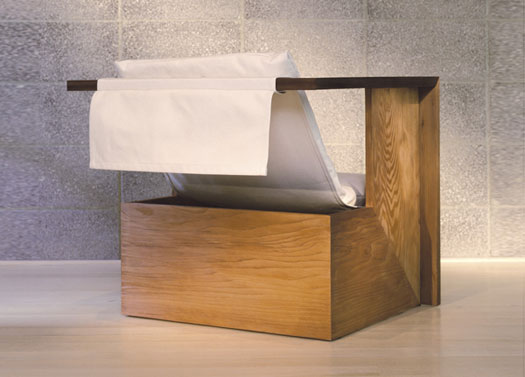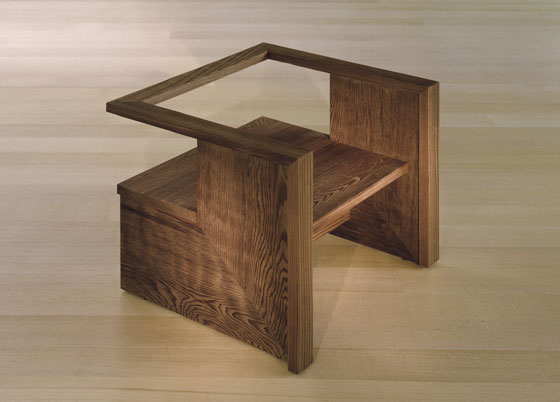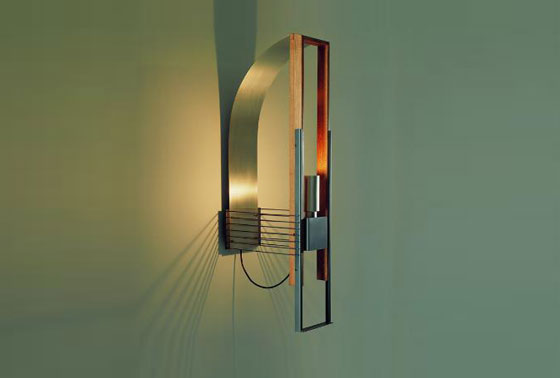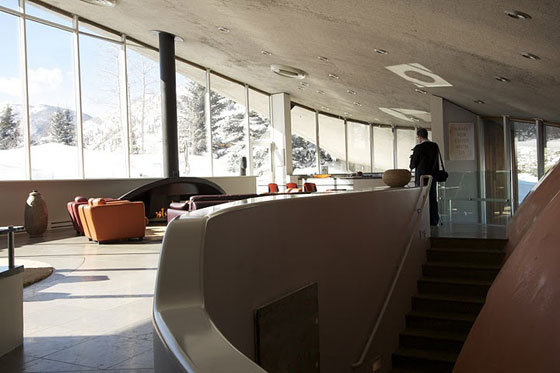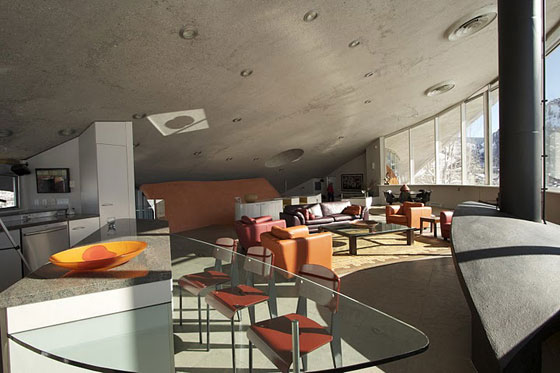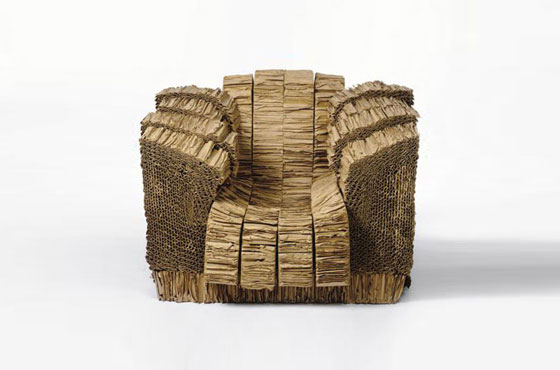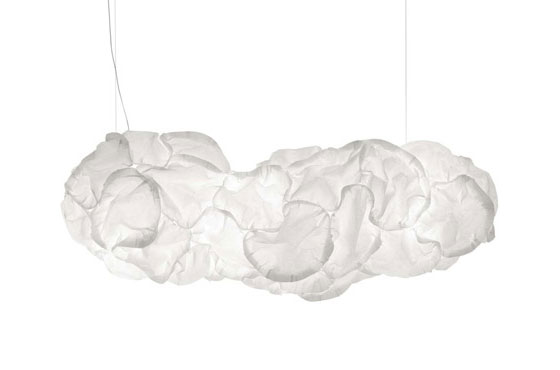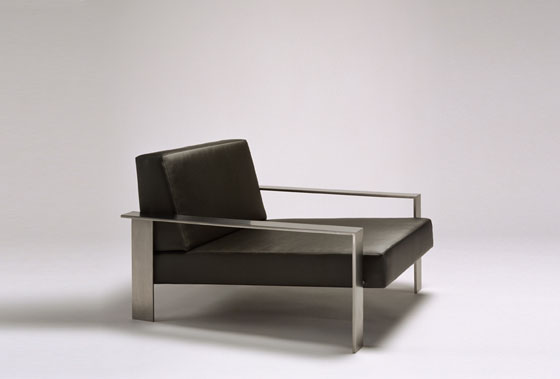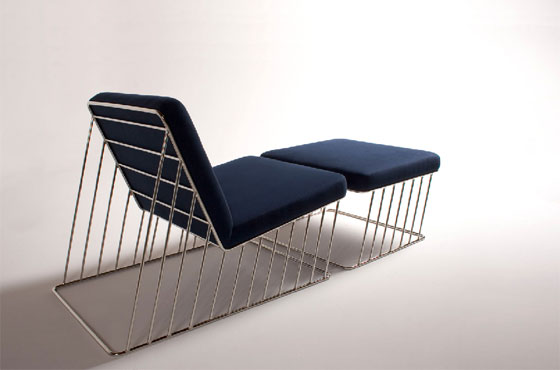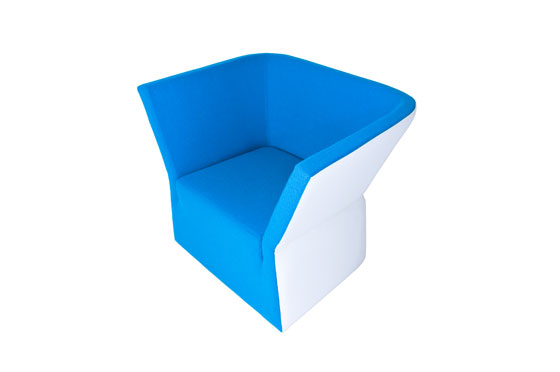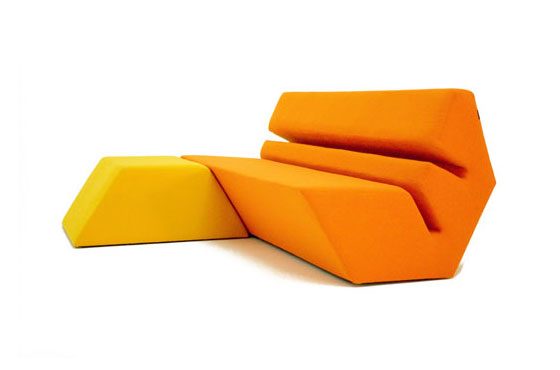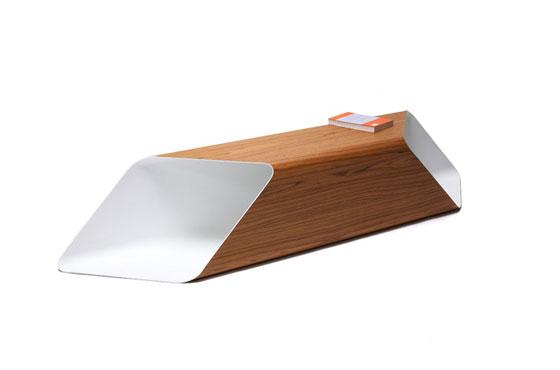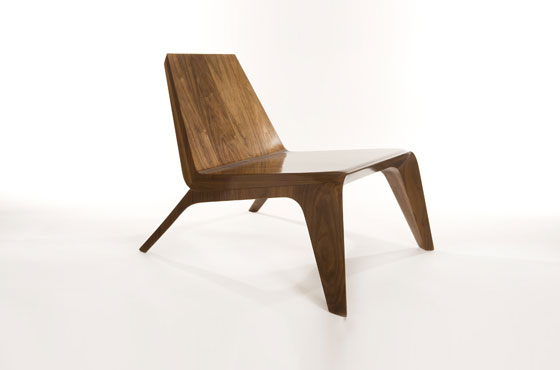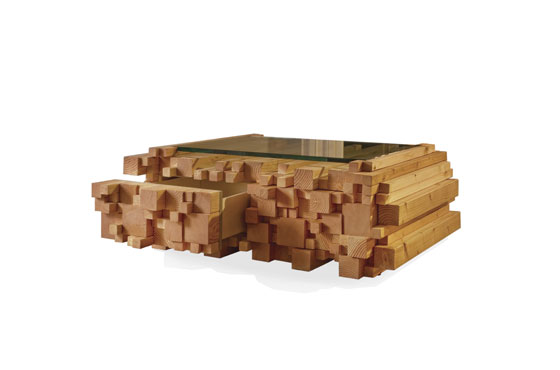California Calls You!: Californian Design
Scritto da Susanne Fritz
Svizzera
26.08.10
California, and in particular Los Angeles, has been home to numerous Hollywood stars and other glamorous figures of the burgeoning jet-set since the 1930s. The City of Angels was the ideal place for many architects to develop their ideas. The spectacular landscape, the sophisticated clientele, the climate, the wealth of the film industry, and, above all, the free-thinking that transcended all convention offered architects then, as well as now, the opportunity to realise their visionary projects.
Kings Road Sofa, design: Rudolph Schindler, 1942, reedition by Marmol Radziner Furniture
Tellingly, some of the most creative minds to help shape the modern Californian style crossed the country to work there. Richard Neutra and Rudolph Schindler knew each other already from their Vienna days, where they had studied under Otto Wagner and Adolf Loos. Both stayed with Frank Lloyd Wright in Taliesin, albeit not at the same time, and, by chance, met again in Los Angeles in 1925.
Kings Road Sling Chair, design: Rudolph Schindler, 1942, reedition by Marmol Radziner Furniture
Kings Road Child's Chair, design: Rudolph Schindler, 1942, reedition by Marmol Radziner Furniture
Neutra was attracted to the city by an advertising poster which bore the slogan 'California Calls You!' and Schindler already had his own office in Los Angeles, in which Neutra worked for a short period of time. Neutra, as well as Schindler, regarded the house in exactly the same way as their teacher, that is, as a Raumplan – or, as Schindler put it: 'The furniture, which is stationary, becomes part of its weave until it's impossible to say where the house ends and the furniture begins. The few places (sic) which are necessarily movable (chairs, etc.) become so in an accentuated degree.' The design of the interior and its furnishing were regarded by Neutra and Schindler as part of the architectural project as a whole. Neutra's 'Marx Lamp' and his 'Boomerang Chair' are still in production today, his designs reflecting the language of the Bauhaus more emphatically than Schindler's furniture, which possessed a more hand-worked character.
Boomerang Chair, design: Richard Neutra, 1942, reedition by House Industries
Marx Lamp, design: Richard Neutra, reedition by martinelli luce
While the famous Case Study Houses of Eames, Neutra, Saarinen, Schindler and many other architects – which were to become icons of Californian modernism – emerged from a drive to reduce housing shortages through the creation of affordable housing, other villas of theirs were designed for a more exclusive clientele, as were those of John Lautner. Lautner's structures were visionary, and so was his interior design, along with the furniture he designed specifically for his builds. Originally from Michigan, he was one of the first young architects to receive a Lloyd Wright scholarship, and so he moved to Taliesin in the early 1930s to build the campus there. In 1939, Lautner set up on his own in Los Angeles, the construction of his own house receiving much attention. Commissions soon followed.
Living room of Sheats Goldstein Residence with Lautner's custom made furniture, 1961- 1963, Beverly Hills, CA, photo: Tycho Saariste

Living room of Sheats Goldstein Residence with Lautner's custom made furniture, 1961- 1963, Beverly Hills, CA, photo: Tycho Saariste
×Living room of Sheats Goldstein Residence with Lautner's custom made furniture, 1961- 1963, Beverly Hills, CA, photo: Tycho Saariste
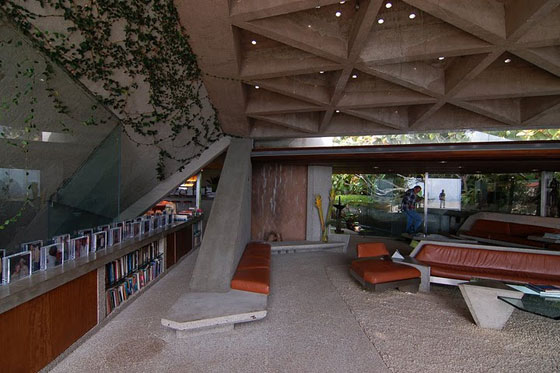
Living room of Sheats Goldstein Residence with Lautner's custom made furniture, 1961- 1963, Beverly Hills, CA, photo: Tycho Saariste
×The 'Elrod House' of 1968 was used as a location for the James Bond film 'Diamonds Are Forever' thanks to its highly futuristic design. Lautner's architectural language was influenced by the early days of space travel, the space age, and the atomic era. He unintentionally gave the 'Googie' architecture movement its name, when his design for 'Googie's Coffee Shop' became its archetype. The Jeff Goldstein Residence is also a Gesamtkunstwerk par excellence. Lautner's interior architecture and own-designed furniture for his villas are still relevant today. Their dynamic formal language and their combination of leather and concrete, which was unusual at the time, like, for example, in the Goldstein Residence, were visionary and already point to a style that is often used in contemporary architecture: the creation of furniture out of architectural surfaces, as, for instance, in Zaha Hadid, Graft und Delugan Meissl's projects.
Turner Residence by John Lautner, 1982, Aspen, Colorado, photo: Judith Lautner
Turner Residence by John Lautner, 1982, Aspen, Colorado, photo: Judith Lautner
If Neutra and Schindler helped create the Californian modernist style in the the 1940s and 50s, Lautner fed into it in the 1960s and 70s. The 70s, however, brought with them a whole new generation of designers, one of whom was Frank Gehry. Gehry studied at USC in Los Angeles, where he also established his own architectural practice in 1962. His structures became increasingly like sculptural spatial collages, his preferred materials consisting of cheap building materials like plywood and corrugated iron, out of which he could realise the model studies he had made.
Grandpa Beaver Armchair, design: Frank Gehry, 1987, manufacturer: Vitra
Mama Cloud pendant light, 2004, design: Frank Gehry, manufacturer Belux
Gehry, who thinks in terms of urban planning, was less interested in designing a seamless architectural ensemble of architecture and furniture. His furniture was produced separately from his architectural designs, but employ nonetheless such malleable materials as cardboard, plywood and sheet metal.
Cross Check Chair, design: Frank Gehry, manufacturer Knoll International
But instead of deconstructivism and experimental architecture, there seems to have been a return to Californian modernism recently. The practice of Marmol Radziner Architecture & Construction was founded in 1989 by Leo Marmol and Ron Radziner. They achieved great recognition through their renovation of the Kaufman House, which was built by Richard Neutra in 1946. In keeping with architects from back then, they offer the client a complete service, ensuring their architectural ideas are realised fully. This means that Marmol Radziner looks after the whole project, from planning to execution and the completion of the interior. They also set up the Marmol Radziner Furniture company to finish their architectural projects with their own furniture pieces.
Dining Chair, designed an manufactured by Marmol Radziner Furniture
Their furniture collection comprises indoor and outdoor furniture and is characterised by the use of expensive materials like chrome and blackened steel, teak and walnut, as well as high-end fabrics. The metal and carpentry workshops in which Marmol Radziner's furniture was produced are run by architects, who take great care over the pieces' details and joints. Marmol Radziner's love of Californian modernism also finds expression in their reproduction of Schindler's furniture designs. 'The Kings Road Group by Rudolph Schindler' are true-to-the-original copies of the architect's furniture collection, made of American redwood from the 1920s.
Low Lounge, Dining Chair, designed an manufactured by Marmol Radziner Furniture
Reza Feiz also cites the modernist architects as exemplary, inspirational figures. Fascinated by the works of John Lautner, Richard Neutra and Pierre König, he founded Phase Design Inc in the year 2000. Although Feiz doesn't have a formal creative training, this self-made designer was awarded a number of accolades in a short space of time and was published widely. His philosophy, 'Strength in simplicity', manifests itself in his choice of materials: refined surfaces, made of wood, metal and fibreglass, lend his furniture a simple, yet luxurious, character. Feiz's 'Wired' collection, made of tubular steel with either solid wood or upholstery, embodies in particular this combination of classical, high-value production and a geometric, functional language. The repetition of the steel elements creates refined optical effects.
Wired Italic Lounge, design: Reza Feiz, manufacturer Phase Design
Wired Side, design: Reza Feiz, manufacturer Phase Design
Equally geometric in its design are Nolen Niu's furniture, which also displays a perspectival aspect. Depending on how they are viewed, the sculptural upholstered furniture takes on a different silhouette in any given space. Instead of the muted palette of the modernists, Niu uses intense colours. Bright tones reveal their brilliance under the Californian sun and mirror the image of positive Californian living.
Arro armchair, designed and manufactured by Nolen Niu
Yo armchair, designed and manufactured by Nolen Niu
Council Design Inc was established by Derek Chen, who lives and works in San Francisco. The idea behind Council Design is – as the name implies – the collaboration between international designers, brought together by Chen. Chen, whose career was shaped by his training as a engineer and his time in Silicon Valley, got his know-how through founding Urbana Design. His work is characterised by the bringing together of technology and traditional handcraft, as well as the use of natural materials with refined finishes. The new 'Optimism' collection features such international designers as Arik Levy, Mike & Maaike, Khod i Feiz, Nendo, Monica Förster, Cédric Ragot and One & Co.
Section bench, design: Derek Chen, manufacturer Council Inc.
Stabil side table, design: Cedric Ragot, manufacturer Council Inc.
Alexander Purcell's training began like that of his European architectural predecessors. He commenced his studies at Cambridge University in England and completed them at the renowned Art Center College of Design in Pasadena. Purcell founded his Design Studio APRRO in Los Angeles, and focuses on the confluence of European and Californian influences. Through his collaboration with with the material experts Studio Caparo in London and Machine Histories in Los Angeles, he found manufacturers who were able to do justice to his designs and could bring together experience, handcraft skills and the latest technology.
JFK lounge chair, design: Richard Overcash for aprro
The best pieces in his collection are devoted to one of the most influential figures of the last century, who came from a part of the US diametrically opposed to the West Coast – John F Kennedy – who lends his name to Aprro's 'JFK' collection. Kennedy hailed from Massachusetts on the East Coast.
East Coast vs. West Coast – the feud between rival factions of hip-hop gangsters, which has seen the shooting dead of, among others, Notorious B.I.G., doesn't exist in the design scene. Thank goodness.
Log Pile coffe table, design: Alexander Purcell for aprro
Video: The Story of Eames Furniture: Marilyn Neuhart with John Neuhart - Interview PART 1
Video: The Story of Eames Furniture: Marilyn Neuhart with John Neuhart - Interview PART 2


